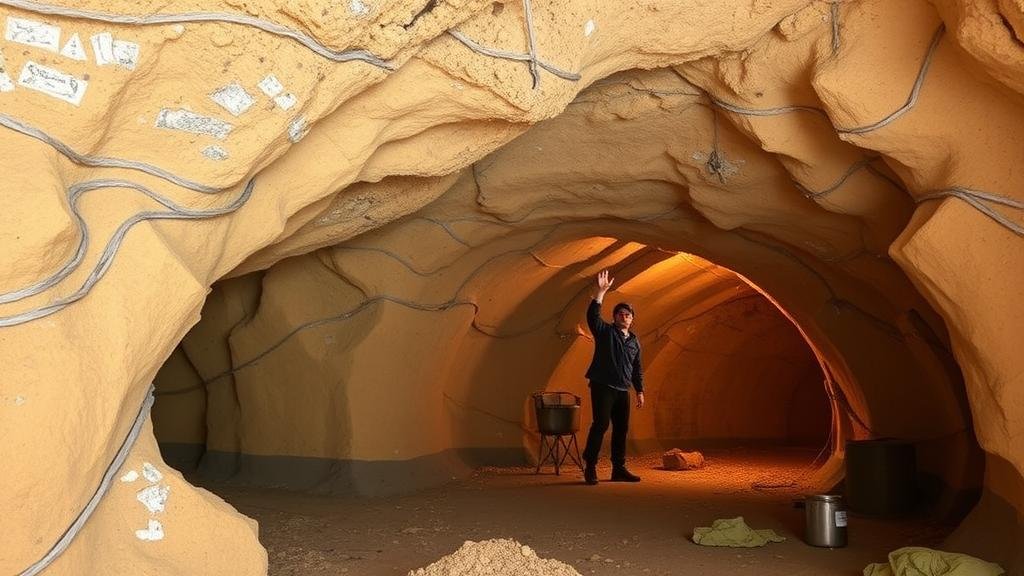Spotting Indicators of Rigged Ceilings in Buried Treasure Tunnels
Spotting Indicators of Rigged Ceilings in Buried Treasure Tunnels
The concept of buried treasure tunnels has fascinated adventurers and historians alike for centuries. While the allure of hidden riches remains, understanding the structural integrity of these tunnels is paramount for safe exploration. One of the critical risks that adventurers face is the presence of rigged ceilings designed to collapse or trap intruders. This article aims to provide a comprehensive overview of how to identify these warning signs effectively.
Understanding Rigged Ceilings
Rigged ceilings are engineered or modified portions of tunnels that present a significant hazard. They may contain booby traps that could collapse the ceiling upon disturbance, potentially leading to serious injury or worse. Historical accounts and archeological studies have documented various designs and methods used in such traps.
Historical Examples of Rigged Ceilings
Throughout history, various cultures have devised ingenious traps to protect their treasures. tombs of pharaohs, for example, often included meticulously designed ceilings that would crash down if a tomb raider entered unauthorized. In South American cultures, similar methods were employed using mechanisms triggered by shifting sands or intruders stepping on concealed pressure plates.
Indicators of Rigged Ceilings
Recognizing the signs of rigged ceilings can prevent accidents and ensure a safer exploration experience. Below are some critical indicators that adventurers should observe:
- Uneven Surfaces: Look for signs of shifting or settling in the tunnel walls and ceilings. If a ceiling appears unbalanced or appears to have sagged, it may indicate an instability.
- Pockmarked Walls: Holes or dents in the walls may suggest previous failures or attempts at rigging mechanisms. These could be evidence of past collapses or traps.
- Unusual Supports: If you notice beams or supports that seem to be holding up significant weight in an unconventional manner, this could indicate a rigged ceiling attempting to disguise itself as stable.
- Noise and Echoes: Pay attention to sounds. If knocking or hollow echoes are prevalent, this may indicate a void or structural trap behind the wall or ceiling.
Using Technology to Enhance Safety
In recent years, technological advancements have enabled divers to evaluate tunnel structures more accurately. Tools such as ground-penetrating radar (GPR) and ultrasonic sensors can help detect anomalies within the walls or ceilings of tunnels.
Ground-penetrating radar, for example, can provide real-time imagery of what lies beneath the surface, allowing explorers to map out potential traps or weaknesses in the structural integrity. Studies have shown that employing GPR has a detection accuracy rate of up to 90% in controlled environments, although field conditions may affect outcomes.
Real-World Applications and Case Studies
Numerous explorers have faced dangers from rigged ceilings while searching for treasures. One notable case involved a team of amateur treasure hunters in Southern California, who, while exploring a series of abandoned mines, triggered a rigged ceiling that resulted in a cave-in.
Fortunately, they had observed key indicators — notably the sound of creaking metal rods and an uneven ceiling. team took the precaution of retreating before further exploration, demonstrating the importance of remaining vigilant for indicators of rigged traps.
Conclusion
In summary, spotting indicators of rigged ceilings in buried treasure tunnels requires a keen eye and a thorough understanding of structural anomalies. Recognizing the signs of instability, leveraging technology for detection, and learning from historical examples provides a strategic advantage to treasure hunters.
By being aware of potential dangers and employing precautionary measures, individuals can significantly reduce risks associated with exploring these fascinating underground worlds. Always approach such adventures with respect for the historical context and a commitment to safety.



